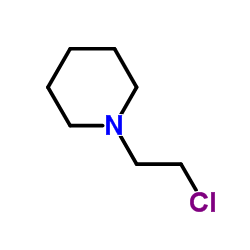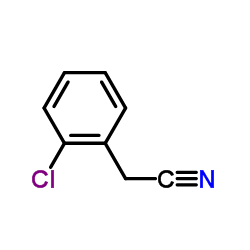SC40230

SC40230 structure
|
Common Name | SC40230 | ||
|---|---|---|---|---|
| CAS Number | 116078-65-0 | Molecular Weight | 407.97700 | |
| Density | 1.124g/cm3 | Boiling Point | 599.8ºC at 760 mmHg | |
| Molecular Formula | C22H34ClN3O2 | Melting Point | N/A | |
| MSDS | N/A | Flash Point | 316.5ºC | |
Use of SC40230SC40230 is a class I antiarrhythmic agent. |
| Name | 4-[Acetyl(isopropyl)amino]-2-(2-chlorophenyl)-2-[2-(1-piperidinyl )ethyl]butanamide |
|---|---|
| Synonym | More Synonyms |
| Description | SC40230 is a class I antiarrhythmic agent. |
|---|---|
| Related Catalog | |
| In Vivo | The antiarrhythmic effects of SC40230 (Bidisomide, SC-40230), a new class I antiarrhythmic drug is investigated in early-phase ventricular arrhythmias induced by coronary artery occlusion and reperfusion in anesthetized rats. SC40230 (5 mg/kg) reduces the number of premature ventricular complexes and the incidence of ventricular tachycardia and ventricular fibrillation similarly to Mexiletine (MXT) and Disopyramide (DSP) in rats with ventricular arrhythmias induced by coronary artery occlusion. In rats with ventricular arrhythmias induced by coronary artery reperfusion following a 5 min coronary occlusion, the antiarrhythmic effects of 5 mg/kg of SC40230 are similar to those of the same doses of MXT and DSP. All three drugs significantly slow the heart rate[1]. |
| Animal Admin | Rats[1] Male Sprague-Dawley rats weighing 200-280g are used. Thirty-nine rats receive intravenous infusion of saline (n=9), SC40230 (5 mg/kg, n=10), Mexiletine (MXT, 5 mg/kg, n=10), or Disopyramide (DSP, 5 mg/kg, n=10). In preliminary experiments, 5 mg/kg of MXT and DSP have significant antiarrhythmic effects. The same dose of SC40230 is used. The injection volume of each agent is adjusted to 0.5 mL with saline. Coronary artery occlusion is induced 5min after drug administration. Electrocardiograms and systemic arterial blood pressure are recorded for 30 min after induction of coronary artery occlusion. |
| References |
| Density | 1.124g/cm3 |
|---|---|
| Boiling Point | 599.8ºC at 760 mmHg |
| Molecular Formula | C22H34ClN3O2 |
| Molecular Weight | 407.97700 |
| Flash Point | 316.5ºC |
| Exact Mass | 407.23400 |
| PSA | 67.63000 |
| LogP | 4.67370 |
| Vapour Pressure | 2.41E-14mmHg at 25°C |
| Index of Refraction | 1.54 |
|
~71% 
SC40230 CAS#:116078-65-0 |
| Literature: Desai; Fowler; Chorvat; Frederick; Hatley; Rorig; Garthwaite Journal of Medicinal Chemistry, 1988 , vol. 31, # 11 p. 2158 - 2164 |
|
~86% 
SC40230 CAS#:116078-65-0 |
| Literature: Awasthi, Alok K.; Paul, Kalidas Organic Process Research and Development, 2001 , vol. 5, # 5 p. 528 - 530 |
|
~% 
SC40230 CAS#:116078-65-0 |
| Literature: Desai; Fowler; Chorvat; Frederick; Hatley; Rorig; Garthwaite Journal of Medicinal Chemistry, 1988 , vol. 31, # 11 p. 2158 - 2164 |
|
~% 
SC40230 CAS#:116078-65-0 |
| Literature: Desai; Fowler; Chorvat; Frederick; Hatley; Rorig; Garthwaite Journal of Medicinal Chemistry, 1988 , vol. 31, # 11 p. 2158 - 2164 |
|
~% 
SC40230 CAS#:116078-65-0 |
| Literature: Awasthi, Alok K.; Paul, Kalidas Organic Process Research and Development, 2001 , vol. 5, # 5 p. 528 - 530 |
|
~% 
SC40230 CAS#:116078-65-0 |
| Literature: Awasthi, Alok K.; Paul, Kalidas Organic Process Research and Development, 2001 , vol. 5, # 5 p. 528 - 530 |
| methyl (4Z)-4-[(4-methoxyphenyl)methylidene]-2-methyl-5-oxo-1H-pyrrole-3-carboxylate |
| SC40230 |






![2-[propan-2-yl(prop-2-enyl)amino]ethanol structure](https://image.chemsrc.com/caspic/346/152563-30-9.png)